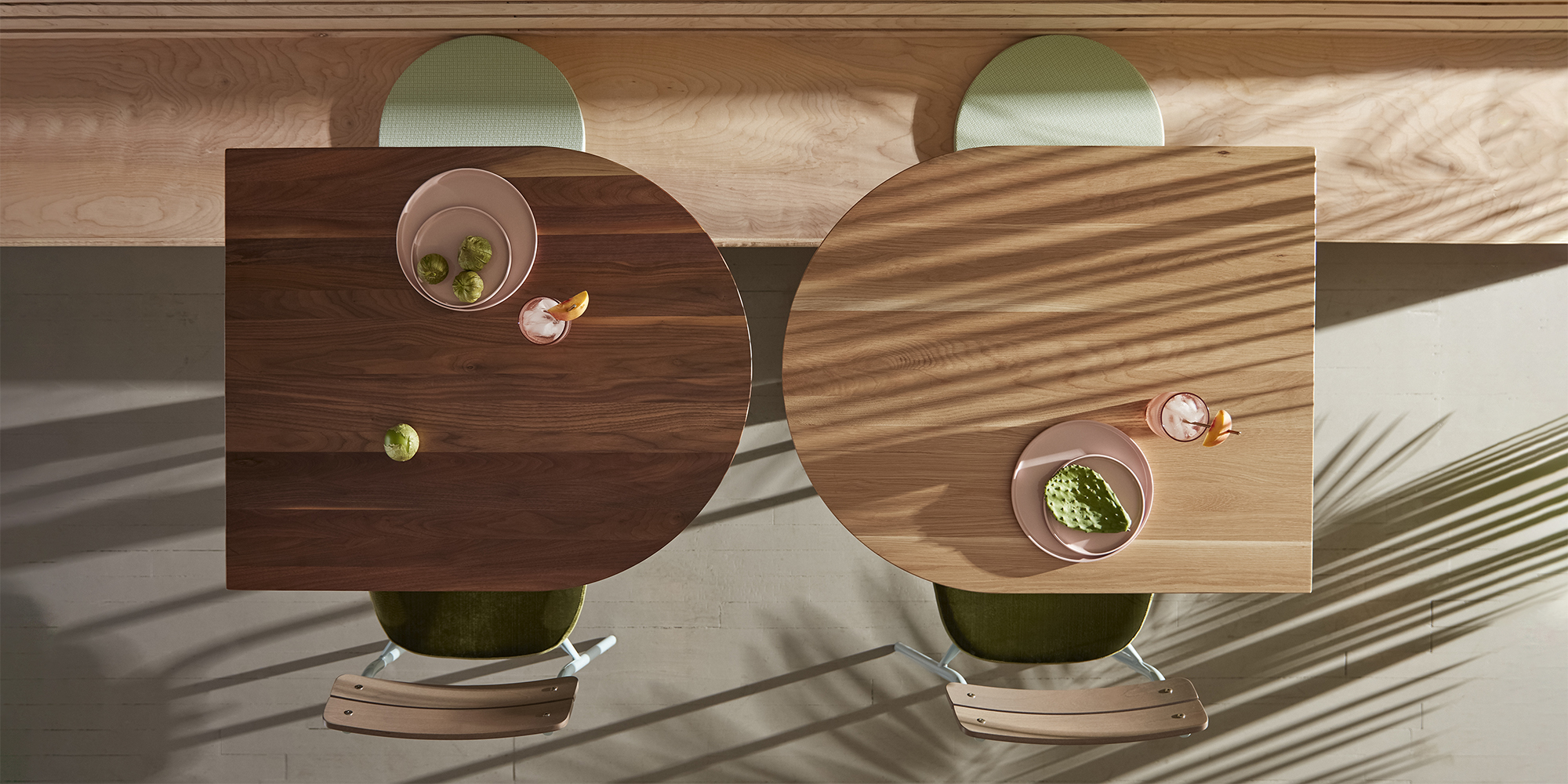Naturally beautiful, solid wood harmonizes functionality and style, resulting in unique pieces that infuse warmth into any space. With a deep appreciation for the character of wood, our made in Michigan table tops are handcrafted with mindfulness at every step. We prioritize the selection of high-quality American hardwood and employ precise craftsmanship techniques, ensuring that each top is a genuine labor of love. More than just a piece of furniture, the use of natural materials supports Biophilic design principles to bring our innate love of nature indoors –creating spaces that are warm and inviting, promoting a sense of well-being.
A More Sustainable Choice
Wood table tops embody natural sustainability due to their inherent properties, making them a superior choice. At Grand Rapids Chair, our solid wood table tops are carefully crafted using locally sourced American hardwood, reducing the need for excessive transportation and minimizing carbon emissions. Furthermore, our solid wood table tops are constructed for high-use commercial furniture and dining spaces and protected with a durable and highly-resistant topcoat. Solid wood tops are long-lasting and improve over time –or they can be refurbished for a renewed aesthetic.
Beauty in the Details
Wood possesses an inherent beauty that never goes out of style. At Grand Rapids Chair, we celebrate this natural appeal, embracing the unique character of the wood itself. From the mesmerizing grain patterns to the rich hues and textures, every piece tells a story. While the characteristics of wood vary from species to species, knots, burls, and other "imperfections" are not flaws to be hidden, but rather cherished aspects that truly make each table top one-of-a-kind. It's this organic beauty that breathes life into your space and adds a touch of warmth and authenticity.
Maple — A Grand Rapids Chair Favorite
For years, Maple has stood as a trusted standard at Grand Rapids Chair, thanks to its exceptional natural characteristics. Renowned for its remarkable strength, aesthetic appeal, and ease of staining, Maple wood continues to be a top choice. Its light, creamy hue, smooth grain pattern, and impressive durability make it an ideal option for our standard stains - check out PLNT Burger, which utilizes Maple table tops with a Natural Finish. With its neutral color and more predictable grain patterns, Maple complements a variety of design styles.
RELATED: Learn more about our Standard Wood Finish options in our Wood Finishes Guide.
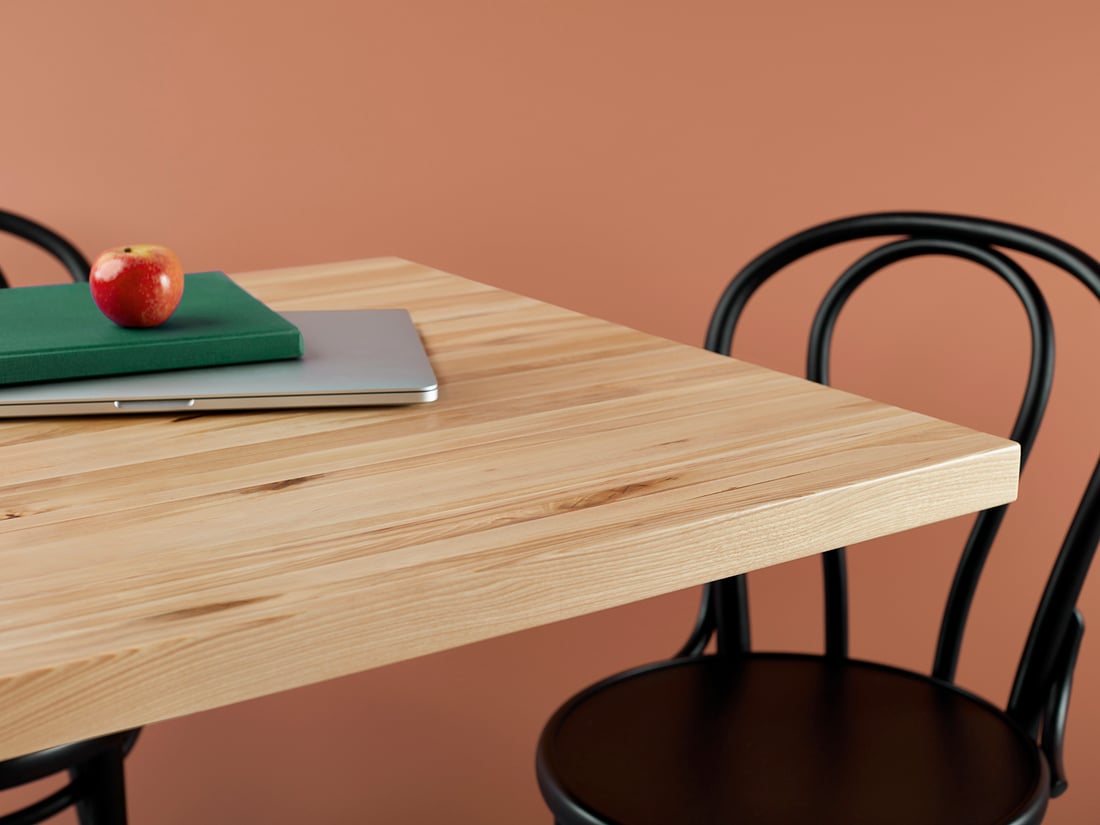
White Oak — A Timber of Timeless Beauty
With its inherent strength, durability, and stunning appearance, White Oak is a standout wood species that has become a favorite material with designers. Oak boasts a pale, light brown to creamy color with a distinctive grain pattern that varies from straight to intricate rays and flecks — this unique grain adds depth and character to any piece. Its resilience to decay and rot ensures that White Oak can withstand the test of time, making it a true investment in both aesthetics and longevity. Whether used in rustic or contemporary designs, White Oak exudes a timeless charm that never fails to captivate.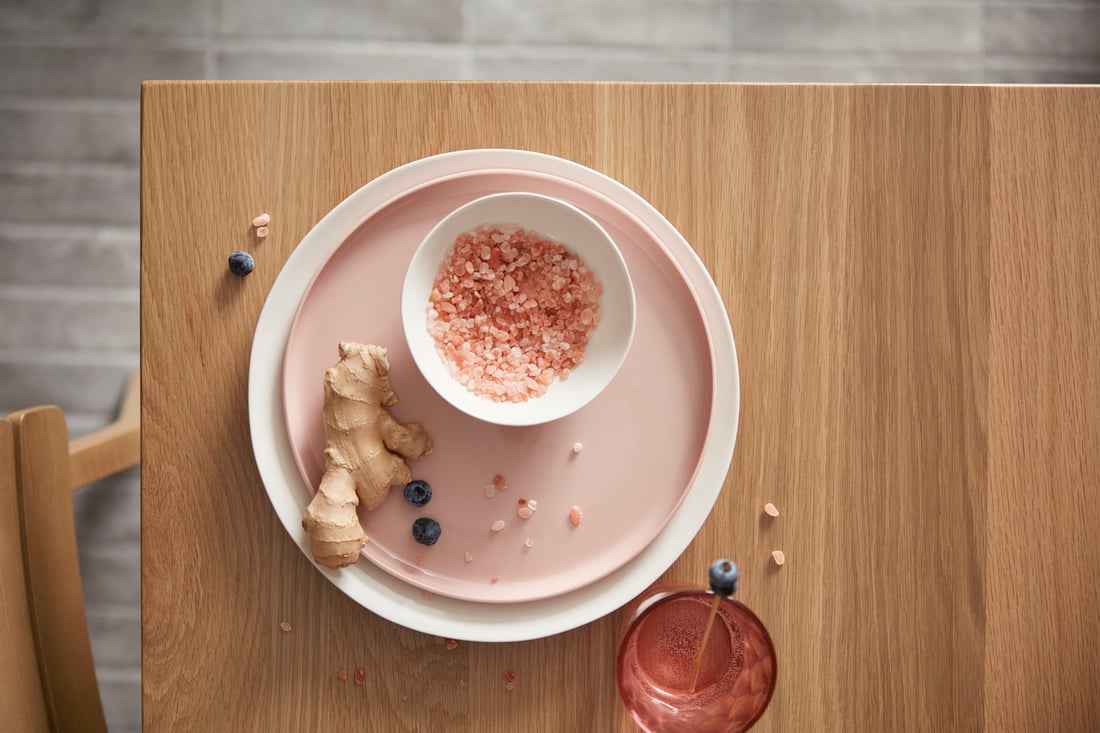
Hickory — Unyielding Strength
Hickory showcases remarkable strength and durability, making it highly sought after for various applications. With its distinct grain patterns and warm tones ranging from pale to deep brown, sometimes accented by reddish hues, hickory emanates rustic elegance. Whether the grain is straight or wavy, hickory's density makes it resistant to wear and tear, perfect for high-traffic areas. Its unique blend of strength and visual appeal makes it a captivating and reliable choice for any space, be it traditional or modern.

Walnut — Exquisite Beauty and Elegance
Walnut is known for its exquisite beauty. With its rich, dark brown color and deep, lustrous grain, walnut possesses a natural allure that exudes sophistication and luxury. The wood's grain pattern varies from straight to wavy, creating a captivating visual texture that adds depth and richness to any piece. From traditional to contemporary designs, Walnut's inherent charm and versatility make it a sought-after material for creating truly remarkable and enduring spaces.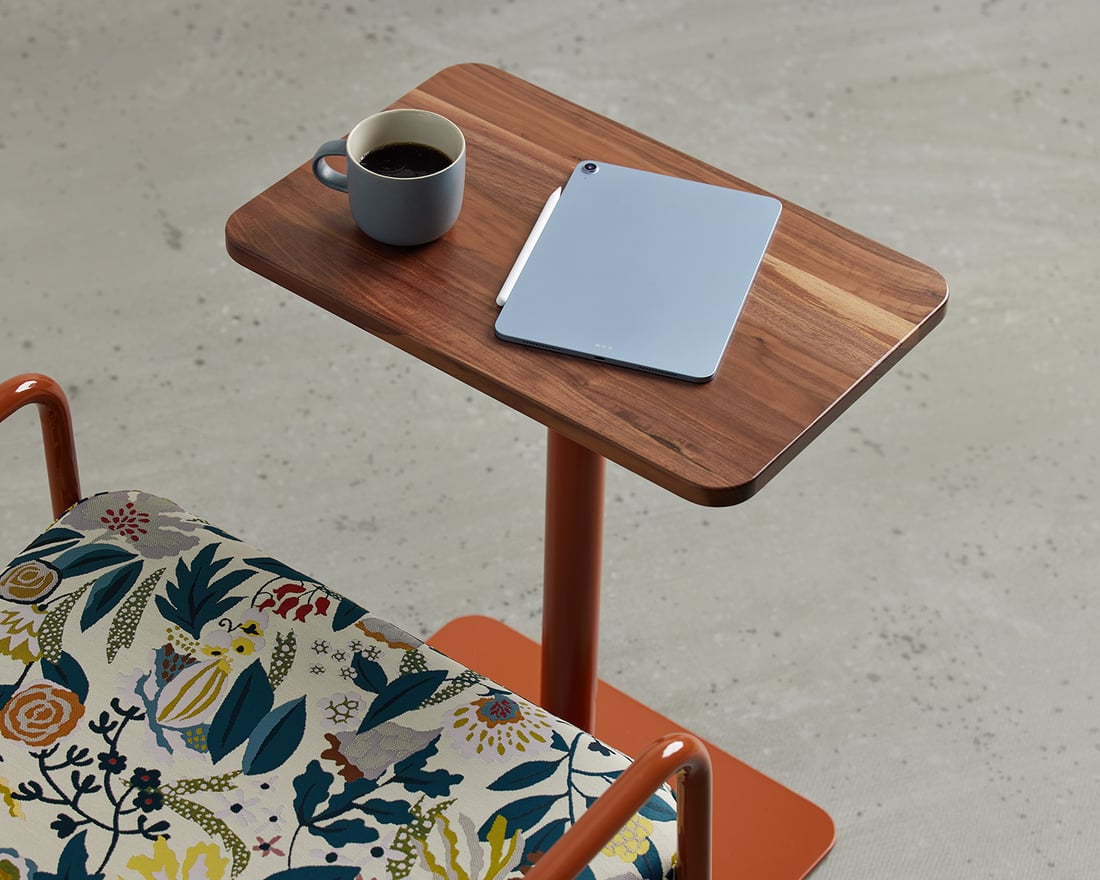
Mixed Wood — The Showstopper
Crafted from a blend of our standard wood options, our Mixed Wood solid wood table top combines the finest features of Maple, Hickory, White Oak, and Walnut, resulting in a showstopping mixture of colors and textures. Carefully placed by hand, each plank contributes to a perfectly random pattern. Our solid wood tables are crafted using random width, continuous-length planks. However, butcher block style, with continuous-length planks is an option – as shown here.
Manufacturing a Better table top — The Process
Our table tops are made-to-order right here in our Grand Rapids factory. Each table top goes through a five-step manufacturing process — guiding the transformation of raw materials into stunning completed table tops. From the initial stage where raw materials are received, to the final stage where a fully finished table top emerges, each step is carefully orchestrated to ensure unparalleled craftsmanship and a seamless journey from start to finish.
The Foundation for Success — Rough Milling
The rough milling process acts as a crucial gateway to creating a quality solid wood table top. Its primary objective is to prepare the wood for production, involving essential steps like flattening, squaring, and dimensioning lumber to establish a sturdy foundation for assembly. Prior to rough milling, a thorough inspection is conducted to identify and address significant defects such as knots, splits, or irregularities that could affect both the structural integrity and overall aesthetic of the table top.
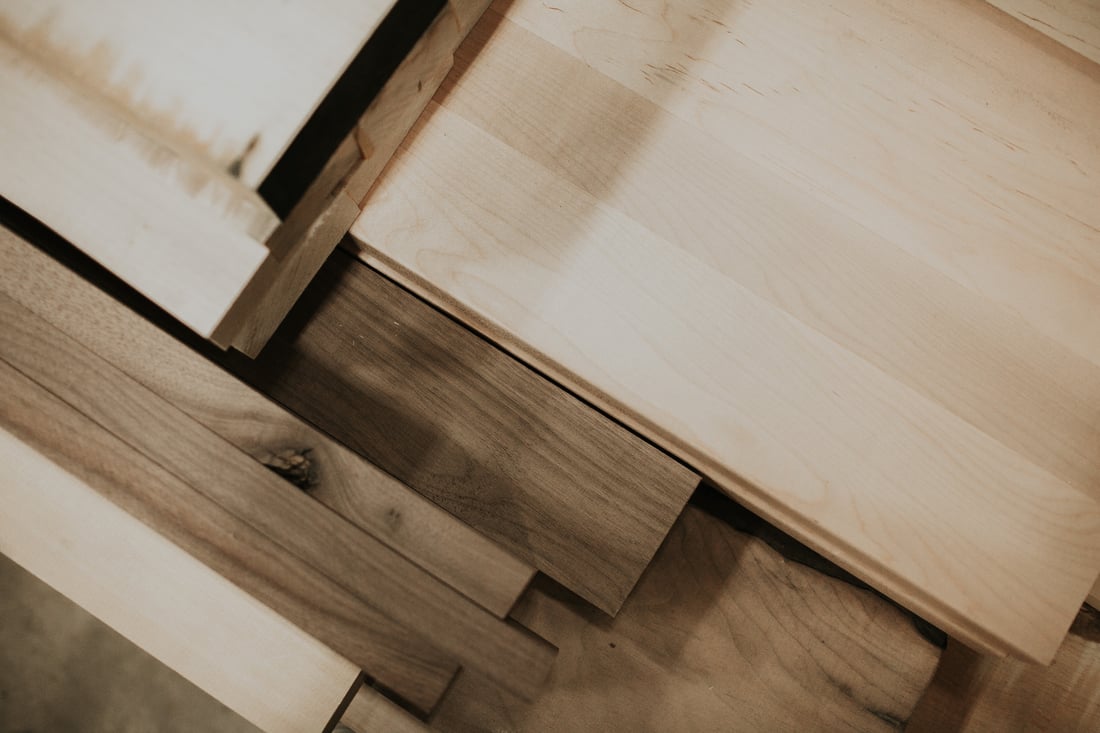
After necessary adjustments and repairs are made, the raw wood proceeds through the mill, where it is cut into planks— the fundamental building blocks from which the table top takes shape. The milled planks are then glued together according to the specified table top size. When joining, care is taken to alternate the grain direction of each plank which prevents any bowing or cupping of the wood in the future. The securely joined planks are carefully clamped and left to cure for twenty-four hours, ensuring a strong and resilient bond. After the curing period, the once-disparate wood planks have harmoniously merged into a solid and sturdy surface. Moving forward, the next step involves trimming to refine the shape and achieve the exact dimensions.
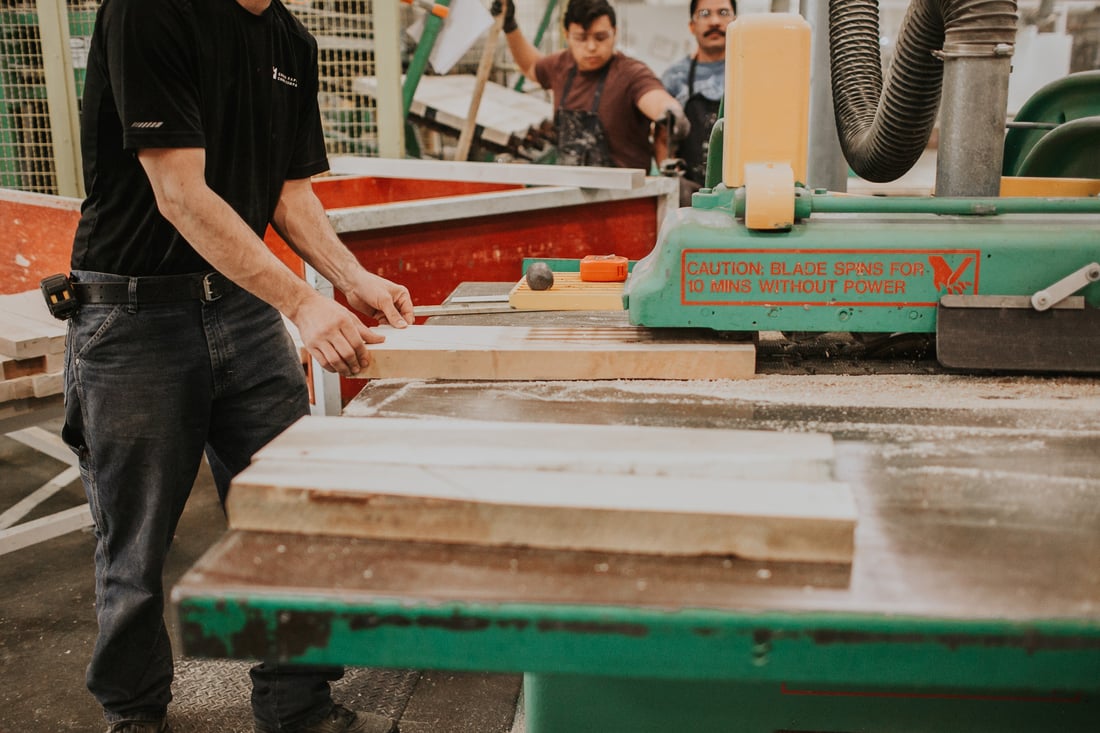
Adding a Soft Touch — Routing & Sanding
Once the planks have been assembled into a solid surface and cut to any shape and size specifications, they move on to the next two steps of the process: sanding and routing. Sanding is a fundamental step in the table top manufacturing process as it smooths out imperfections, reveals the wood's natural beauty, and creates a surface that is pleasing to both touch and sight. The sanding process begins with coarse-grit sandpaper, which effectively removes any roughness or irregularities present on the surface. As the process advances, finer-grit sandpapers are utilized, gradually refining the surface to a silky smooth texture. The careful progression through different grits not only removes blemishes but also enhances the wood's natural grain, bringing out its unique character.
Once the sanding process is completed, attention turns to routing. Routing serves to perfect the edges of the table top, ranging from subtle buffing to soften hard edges and corners, to achieving a desired edge profile, adding a touch of customized sophistication to the final product.
RELATED: Learn more about our Standard Table Edge Profiles in our Tables Brochure.
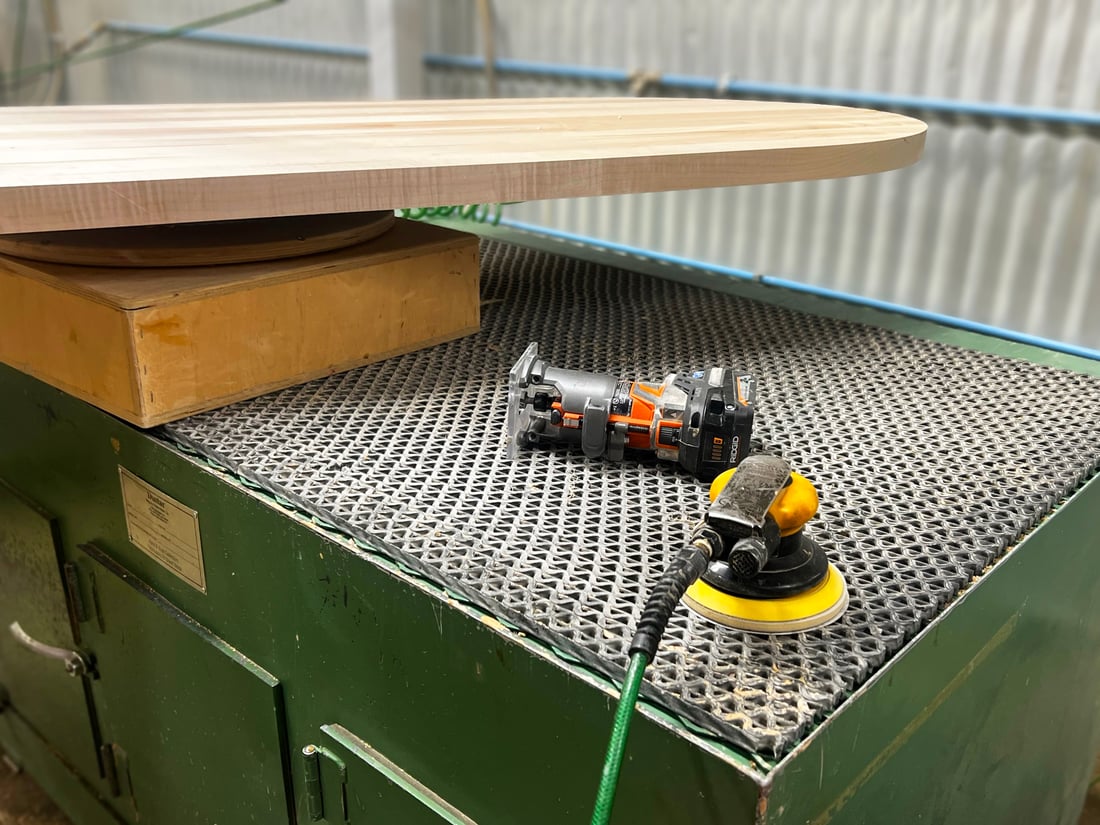
Protecting the Materials — Finishing
Once the table tops have been smoothed and their edges routed with the desired edge profiles, they proceed to the final phase of the production process: finishing. Our finishing process ensures table tops are protected, easy to maintain and stand up to the rigors of commercial furniture and food-safe dining requirements. It's our goal to create pieces that are high-quality and long-lasting. Our antimicrobial, low-sheen topcoat is the first line of defense against damage. Not only does it protect against damage, staining and fading, but it helps prevent the growth of bacteria – preserving the unique beauty of every table.
Get Ready to Enjoy — Package & Ship
Get ready to enjoy the fruits of our labor! Depending on the product variation and size ordered, we package and ship your solid wood table top or assembled table. Our packaging materials are chosen with safety in mind, ensuring that the piece is protected during transit, arriving at its new space ready to encourage human connection. You can create a space that not only captures attention but also nourishes connection and fosters well-being.
Grand Rapids Chair celebrates the transformative power of solid wood in creating naturally beautiful and functional table tops that infuse warmth into any space. With a deep appreciation for the character of wood, each table top is handcrafted to be one-of-a-kind and long-lasting. Whether you choose Maple, White Oak, Hickory, Walnut, or our captivating Mixed Wood option, each wood species brings its own charm and elegance. From rough milling to finishing, every stage of the manufacturing process is carefully orchestrated to ensure unparalleled craftsmanship. Embrace the natural beauty of solid wood with Grand Rapids Chair and discover the perfect centerpiece for your space in our and explore our Table Collections today
